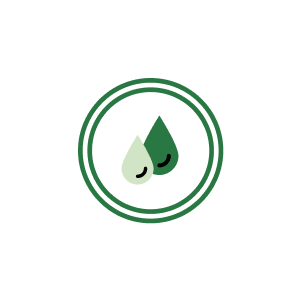En Solución provides affordable, chemical-free sanitization via ozone nanobubble wash water
-

Powerful pathogen- killing agents, yet safe for consumption
-

3000x faster than chlorine, with a safer delivery system for workers
-

No residuals left on products beyond oxygen and water
-

of consumers want packaging showing chemicals used in growth & production
En Solución’s USDA and FDA funded trials and field pilots prove biofilm prevention, increased shelf life, and significant log reductions in target pathogens.
-
Broadly speaking, the pathogens that cause most recall-associated outbreaks are Salmonella, E. coli 0157, and Listeria monocytogenes. These pathogens are a concern when found on the surface of product, on food contact surfaces, and in wash water that can lead to cross-contamination events.
There is extensive evidence of ozone’s effectiveness at neutralizing these pathogens in the existing literature. Ozone (O3) is widely acknowledged as one of the most potent sanitizers, with applications in sterilization, virus inactivation, deodorization, decomposition of organic compounds, pesticide removal, mycotoxin degradation, and more. It has been used successfully in bottled water plants and wastewater treatment for many decades. Ozone is generally recognized as a superior sanitizer when compared to chlorine—the oxidation potential is higher, it works faster, does not result in the harmful byproducts and residue of chlorine, requires no special disposal system, and the water, once filtered for particulates, can be reused.
-
It is estimated that 20% of US grown food goes to waste before it is purchased. Such levels of spoilage represent a significant loss of economic value for growers and processors. Early pilots of ozone nanobubbles show great promise in extending product shelf-life across various commodities.
-
Preliminary research confirmed the promise of ozone nanobubbles in sanitization applications: it can completely eliminate Escherichia coli O157:H7 in contaminated wash water with no organic load and can reduce Salmonella and Listeria by greater than log 4 CFU/mL. Further, ozone nanobubbles showed log 3 CFU/mL and greater reductions in contaminated wash water and up to log 4 CFU/sq cm reductions on certain food contact surfaces (consistently bringing levels to the non-detect threshold). Additionally, our university partner demonstrated that ozone nanobubbles are as effective as traditional chemical sanitizers at removing biofilms from surfaces and have a uniquely preventative capacity to delay the onset of new biofilm growth.
-
Ozonated water does not result in the harmful byproducts and residuals of chlorine (e.g. chloramines) and requires no special disposal system. Depending on the municipality, processors are sometimes required to neutralize chlorine with additional chemicals prior to disposal. Ozone nanobubbles degrade harmlessly into oxygen over time, and ozonated wash water can be released back into the environment or recycled.
PMA WEBINAR
NANOBUBBLES: New pop for improved produce safety
Our CEO Dr. Alex Athey joined Produce Marketing Association's
Dr. Trevor Suslow on a webinar hosted by PMA.


